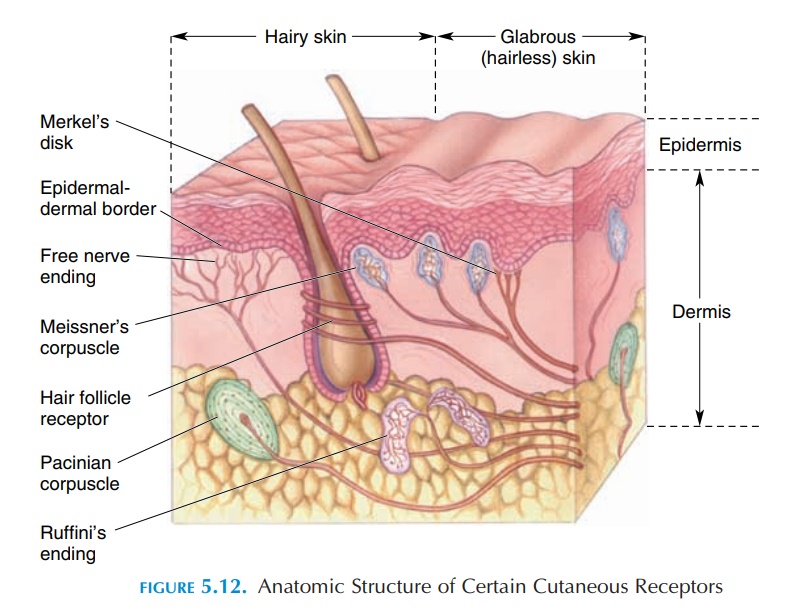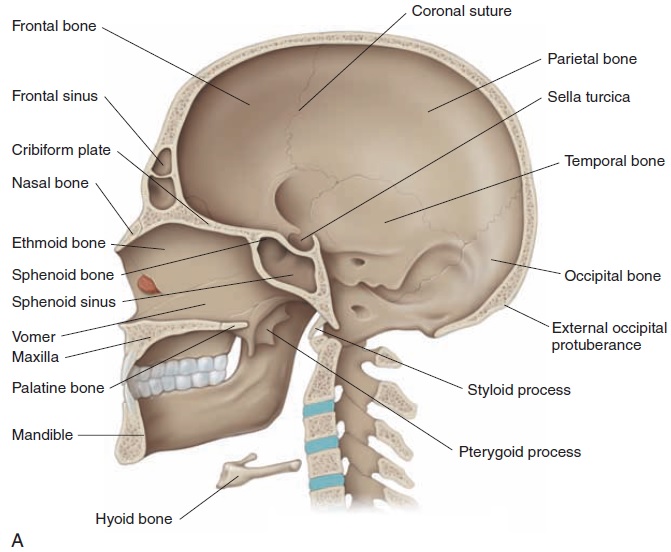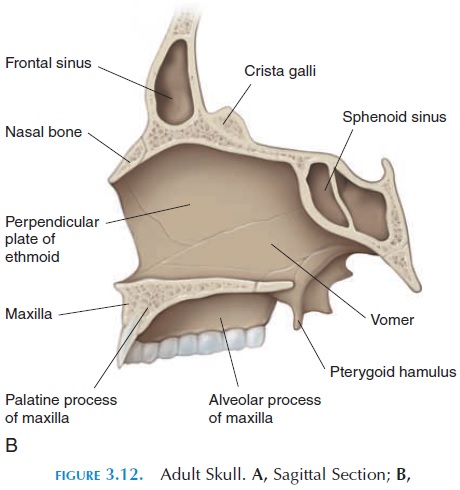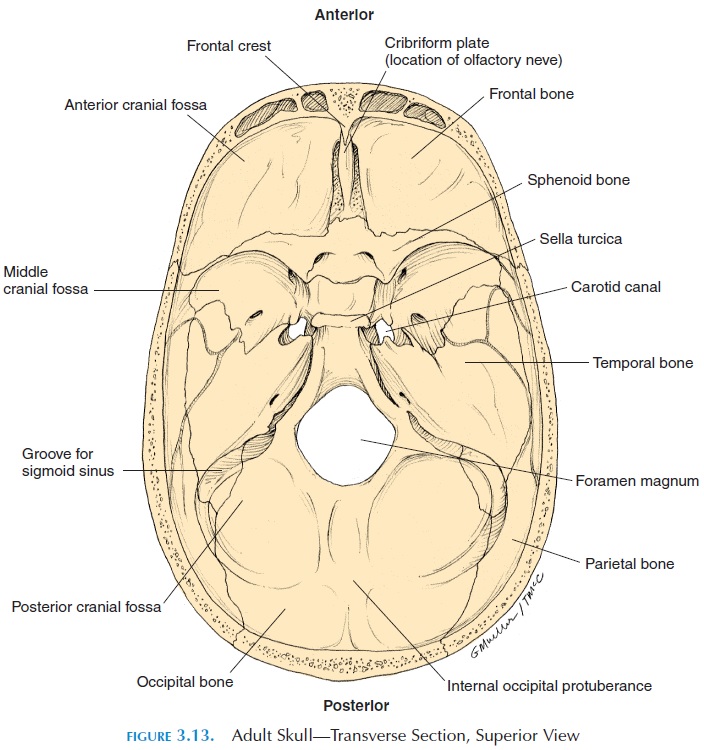Chapter: The Massage Connection ANATOMY AND PHYSIOLOGY : Nervous System
Cutaneous Receptors - Sensory Nervous System

CUTANEOUS RECEPTORS
There are many different types of nerve endings on the skin. Some are free nerve endings, some have a capsule around them, and others have expanded tips of nerve endings. Some nerve endings are found wound around hair follicles (see Figure 5.12). Any given receptor signals or responds to only one kind of cutaneous sensation. There are four different cuta-neous senses: touch-pressure, pain, cold, and warmth.

Touch Receptors
Touch receptors are present over the entire body, but are more numerous in the skin of the fingers and lips, with relatively fewer receptors in the skin of the trunk. Many are located around hair follicles. The hair acts as a lever and slight movements of the hair magnify the effect on the receptors.
Proprioceptors
Awareness of the body in space is a result of impulses from receptors located in and around joints (joint re-ceptors), within skeletal muscle, and between ten-dons and muscles (see Figures 4.12 and 4.13). A conscious picture of the position of the body isa result of integration of impulses generated by these receptors and those from the eyes, muscle spindles, skin, and other tissue.
Temperature Receptors
There are two types of temperature receptors; one that responds maximally to temperatures slightly above body temperature (warmth) and one that re-sponds to temperatures slightly below body tempera-ture (cold). These are actually two degrees of warmth because cold is not a form of energy.
There are 4 to 10 times more cold receptors than warm receptors. Cold receptors respond to tempera-tures from 10–40°C (50–104°F), and warm receptors respond from 30–45°C (86–113°F). With time, be-tween 20–40°C (68–104°F), the receptors adapt and conscious perception of temperature diminishes. At temperatures above and below this, the receptors do not adapt. At temperatures above 45°C (113°F), the tissue becomes damaged and the sensation is that of pain.
Itch and Tickle
Mild stimulation, especially if produced by something that moves across the skin, causes itch and tickle sen- sations. Free nerve endings of slow conducting, un-myelinated fibers seem to carry these sensations and repetitive, mechanical, local stimuli and/or chemicals such as histamine stimulate these receptors. Itch could possibly be a fifth cutaneous sense.
Complex sensations, such as the ability to sense vi-bration; discriminate two stimuli applied close toeach other (2-point discrimination); and identify objects based on size, shape, consistency, and texture by handling the object without looking at it (stereog-nosis), are a result of the integration of the variouscutaneous senses and require an intact cerebral cor-tex. A pattern of rhythmic pressure stimuli is inter-preted as vibration.
Pain Receptors or Nociceptors
The stimuli for pain, pathways, and perception of pain is complex.



Related Topics